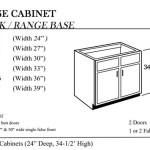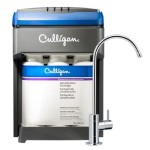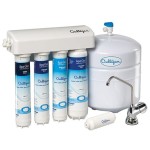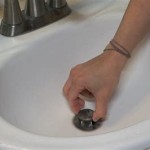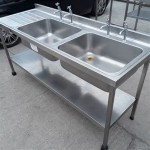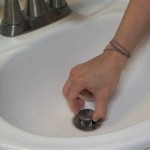Kitchen Sink Garbage Disposal Leaking: Causes, Solutions, and Prevention
A leaking kitchen sink garbage disposal is a common household problem that can quickly transform into a major annoyance. Not only does it create a mess and potential water damage, but it also indicates a deeper issue that needs attention. Understanding the causes of a leaky disposal can help homeowners diagnose the problem and implement the appropriate solutions. This article delves into the various reasons why your disposal might be leaking, provides practical solutions, and discusses preventative measures to avoid future leaks.
Common Causes of Kitchen Sink Garbage Disposal Leaks
There are several reasons why your kitchen sink garbage disposal might be leaking. Identifying the source of the leak is crucial for choosing the right solution. Here are some of the most prevalent causes:
- Loose or worn-out mounting ring: The mounting ring seals the disposal to the sink, preventing leaks. If it becomes loose or worn, water can escape.
- Damaged or cracked disposal housing: The housing itself can be damaged by impact or corrosion, creating holes or cracks that allow water to leak.
- Leaking drain pipe connections: The drain pipe connecting the disposal to the plumbing system can leak if it's not properly sealed or if there are cracks or holes.
- Worn-out gaskets: Gaskets, located around the disposal's blades and other moving parts, can wear out over time, leading to leaks.
- Clogged drain: A clogged drain can build up pressure, forcing water to escape through other pathways, including the disposal's housing or mounting ring.
Solutions for a Leaking Kitchen Sink Garbage Disposal
Once you've identified the cause of the leak, you can apply the appropriate solution. Here are some common fixes:
- Tighten the mounting ring: If the mounting ring is loose, simply tightening it can often resolve the leak. Use a wrench to firmly tighten the ring, ensuring it's secure without over-tightening.
- Replace the mounting ring: If the mounting ring is worn or damaged, it needs to be replaced. Purchase a new ring that matches the dimensions of your disposal and install it following the manufacturer's instructions.
- Repair or replace the disposal housing: If the disposal housing is cracked or damaged, it may need to be repaired or replaced entirely. Depending on the extent of the damage, you might be able to use epoxy or other sealants to repair minor cracks, but major damage requires a new disposal.
- Fix leaking drain pipe connections: Leaky drain pipe connections can be fixed by tightening the connections or replacing any damaged parts. Use pipe sealant or thread tape to ensure a secure connection.
- Replace worn-out gaskets: Worn-out gaskets need to be replaced to prevent leaks. Consult your disposal's manual for the specific gasket type and ensure you purchase a compatible replacement.
- Clear the drain: A clogged drain can be cleared using a plunger, drain snake, or chemical drain cleaner. If the clog is severe, you might need to call a plumber for professional assistance.
Preventing Kitchen Sink Garbage Disposal Leaks
Taking preventative measures can significantly reduce the chances of your disposal springing a leak. Here are some helpful tips:
- Avoid overloading the disposal: Always use the disposal in moderation and avoid putting large quantities of food scraps into it. Overloading the disposal can strain its motor, potentially leading to damage and leaks.
- Grind only appropriate items: The disposal is not designed for all types of food waste. Avoid putting fibrous materials like celery, bones, and egg shells into the disposal, as they can clog the drain or damage the blades.
- Run cold water while grinding: Cold water helps lubricate the blades and flush away food scraps. Running cold water while grinding also prevents the disposal from overheating.
- Clean the disposal regularly: Cleaning your disposal regularly helps prevent clogs and ensures its smooth operation. Use a disposal cleaner or a mixture of baking soda and vinegar to clean the unit, followed by rinsing with cold water.
- Inspect the disposal periodically: Regularly inspect the disposal for signs of wear and tear, such as loose connections, cracked housing, and worn-out gaskets. Early detection and repair can prevent major problems and leaks.

Leaking Garbage Disposal Quick Fix Trick Revealed Leaky From Bottom Diy Repair Youtube

Three Reasons Why Your Garbage Disposal Is Leaking Magnolia

Kitchen Sink Backing Up Garbage Disposal Leaking Water Doityourself Com Community Forums

How To Respond A Garbage Disposal Leaking From The Bottom

Leaking Garbage Disposal Here S What To Do My Buddy The Plumber Electric Heating Air

Top Reasons Garbage Disposer Leaking Water Troubleshooting

Is Your Garbage Disposal Leaking From The Bottom Here S What To Do

How To Fix Garbage Disposal Leaking Black Sludge Under Sink Home Improvement Stack Exchange

Why Is Water Dripping From The Garbage Disposal

Why Is My Garbage Disposal Leaking
